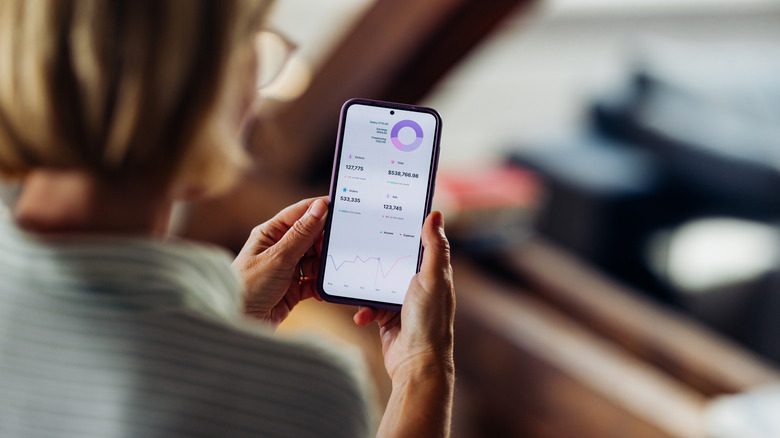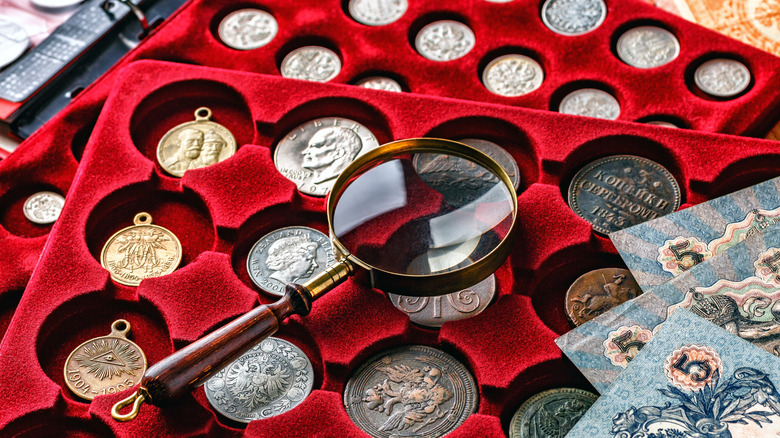Investing In This Collectible Market Could Reap Big Rewards
The collectible market has grown significantly over the last few years — and not just by boosting your net worth — with its overall value going from $298.63 billion in 2018 to $394.51 billion in 2024, according to Credence Research. This growth is expected to continue into 2032, and most likely beyond. However, within the collectibles market, there are several niches that can provide investors with opportunities to realize large gains. And while art and antiques took the largest share of collectibles revenue in 2023, at more than 33% , as stated by Grand View Research, rare coin collecting can also offer a unique opportunity to protect and even grow your wealth.
Coin collecting, also referred to as numismatics, brought in $10.74 billion in 2024, and this collectible market niche has an expected growth potential of 10.5% over the forecasted period from 2025 to 2032, per a report from Maximize Market Research. With growth like this, investing in this collectible market could reap big rewards for smart investors. While numismatics is nothing new, recent economic uncertainty and massive inflation have helped the practice gain momentum. Rare coins are a tangible asset, with their value being tied not only to their historical significance and scarcity, but also to their precious metal content.
Because rare coins offer value in more ways than one, they're an asset worth considering as an addition to a diversified portfolio. However, like with any investment, coin collecting has advantages and disadvantages. Consider these pros and cons of collecting rare coins as part of an investment strategy so you're clued in on the risks versus rewards.
Collecting rare coins as an investment has several benefits
Although precious metal content plays a part in the value of a coin, it's not the only reason it's collectible. The historic sentiment of coins can be a large part of their valuation. Investing in a collectible coin, token, or other currency isn't just about the monetary gains but also the historic significance the object has and its importance to the collector. Minting errors can also increase a coin's value, with some collectors paying up to $25,000 for coins with distinct mistakes, according to American Historic Coins & Collectibles.
Another benefit of collecting rare coins is that their numbers are limited. When you own something rare or one of a kind, it adds a unique value that can't be placed on something still being produced. People often desire things they feel are out of reach to them, which puts an added value on something like a rare coin. These coins don't necessarily have to be old to be valuable, either. Meaning a coin collection doesn't have to comprise Spanish gold doubloons or ancient Roman denarii to be worth something. For example, limited-edition coins such as the U.S. Mint's American Eagle Series and the Royal Canadian Mint's Gold Maple Leafs have rare designs that make them attractive to investors.
Also, unlike sculptures or paintings, collectible coins are small, making them easier to store than other collectible investment options. This means investors don't need as much space to keep valuable coins, freeing it up for larger collectibles or other things they might enjoy.
Downsides for investors to consider when collecting coins
Any investment comes with its share of risk, and collectible coins are no different. For starters, collectible coins don't have the same liquidity as stocks or bonds. Selling a rare coin for profit can take time because, while there's a growing interest in coin collecting as an investment, not every investors might want to add rare or collectible coins to their portfolio just yet.
It's also worth noting that rare and special coins require specific storage to ensure they retain their value. These coins need to be kept in sleeves or books designed for the purpose, and wearing gloves when handling rare coins is always recommended. The Great American Coin Co. suggests having basic numismatic tools like a magnifier, soft cotton gloves, coin holders or storage boxes, and coin books. This often means an additional investment in the right equipment for the safety and security of a coin collection.
Unfortunately, there's also a risk of fraud associated with coins that other collectible markets, like stamps, don't share. It can be easier to replicate a rare coin and pass it off as authentic than it can be with other types of collectibles. In a Coin Week article by Jeff Garett, he recounts a time in his early career when he lost $20,000 purchasing rare coins that turned out to be counterfeit. This makes having a certificate of authenticity for a collectible coin the key to avoiding any unnecessary complications — especially when the time comes to sell.


